 |
|
HOME
|
US Navy -
ships
|
US Navy - air
units
|
USMC - air
units
|
International
Navies
|
Weapon Systems
|
Special Reports |
|
|
|
|
|
United Kingdom - Royal Navy Broadsword (Type 22) class Guided Missile Frigate |
|
|
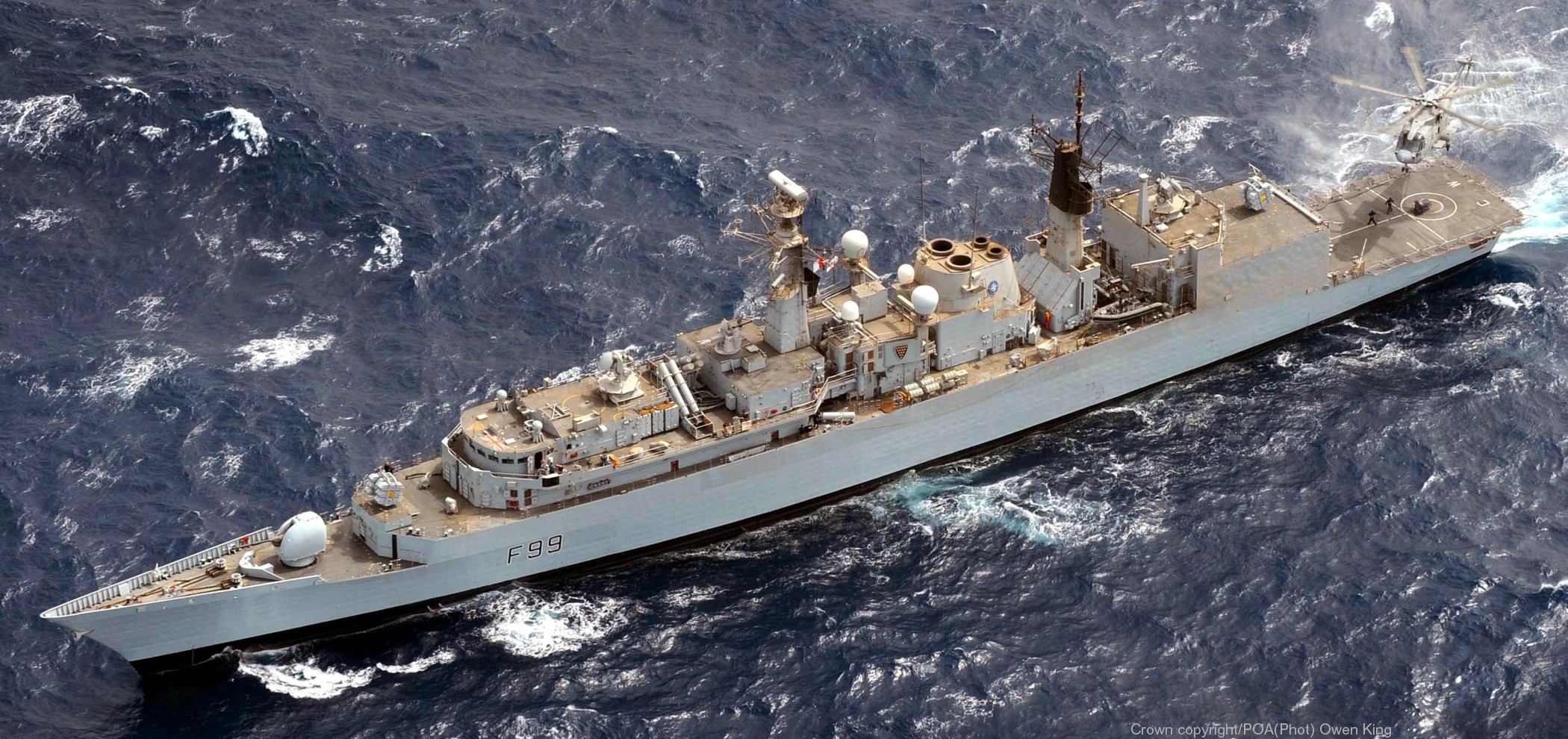 |
|
|
| Ships: |
|
Batch 1 - Broadsword: F 88 HMS Broadsword (1979) F 89 HMS Battleaxe (1980) F 90 HMS Brilliant (1981) F 91 HMS Brazen (1982) Batch 2 - Boxer: F 92 HMS Boxer (1983) F 93 HMS Beaver (1984) F 94 HMS Brave (1986) F 95 HMS London (1987) F 96 HMS Sheffield (1988) F 98 HMS Coventry (1988) Batch 3 - Cornwall: F 99 HMS Cornwall (1988) F 85 HMS Cumberland (1989) F 86 HMS Campbeltown (1989) F 87 HMS Chatham (1990) |
| Specifications: |
|
Batch 1:
Length: 131 meters (430 feet) Beam: 14,8 meters (49 feet) Draft: 6,1 meters (20 feet) Displacement: 4400 tons (standard) Batch 2: Length: 146,5 meters (481 feet) Beam: 14,8 meters (49 feet) Draft: 6,4 meters (21 feet) Displacement: 4800 tons (standard) Batch 3: Length: 148,1 meters (486 feet) Beam: 14,8 meters (49 feet) Draft: 6,4 meters (21 feet) Displacement: 5300 tons (standard) Speed: 30 knots (56 km/h) full / 18 knots (33 km/h) cruise Complement: Batch 1: 222 / Batch 2: 273 / Batch 3: 250 Propulsion: COGOG (combined gas or gas) 2 shafts, 2 propellers Batch 1 & 2: 2 x Rolls-Royce Olympus TM3B gas turbines (54000 shp) / 2 x Rolls-Royce Tyne RM1C gas turbines (9700 shp) HMS Brave (F 94): 2 x Rolls-Royce Spey SM1C gas turbines (37540 shp) / 2 x Rolls-Royce Tyne RM1C gas turbines (9700 shp) Batch 3: 2 x Rolls-Royce Spey SM1A gas turbines (37540 shp) / 2 x Rolls-Royce Tyne RM3C gas turbines (9700 shp) Armament: 2 x GWS-25 launcher for 6 Sea Wolf SAM missiles (all batches) 1 x Mark 8 4.5 inch (114mm) gun (Batch 3 only) 2 x Mk-141 quad missile laucher for up to 8 RGM-84 Harpoon SSM (Batch 3) 4 x MM38 Exocet SSM launcher (Batch 1+2) 2 x GAM-BO1 20mm machine guns 1 x Goalkeeper CIWS (Batch 3) 2 x triple torpedo tubes Aviation: flight deck and hangar for up to 2 helicopters (2 Lynx or 1 Sea King) |
|
|
|
The Type 22 Broadsword class was a class of frigate built for the
British Royal Navy. Fourteen of the class were built in total, with
production divided into three batches. HMS Cornwall was the last
Royal Navy Type 22 frigate, retired from service on 30 June 2011 Nomenclature: Broadsword, Boxer It was originally envisaged that all Type 22s would have names beginning with 'B' (Broadsword, etc.), following the 'A' names used for Type 21s (Amazon, etc.). This changed after the Falklands War when two replacement ships were ordered for the destroyers sunk (Sheffield and Coventry) and were named to commemorate them. Another vessel ordered earlier but not yet started, which was to be named "Bloodhound" was renamed "London". Cornwall The alphabetical progression was re-established with the Batch 3 ships (Cornwall, etc.) before being temporarily abandoned with the Type 23 class, named after Dukedoms (Norfolk, Lancaster, etc.). The Royal Navy's latest escort class (the Type 45 or Daring class) have re-introduced the alphabetical progression, using destroyer names from the 1930s and 1950s. Design: The Type 22 was designed to be a specialist anti-submarine warfare vessel as part of the Royal Navy's contribution to NATO. During Royal Navy service the ships evolved into general purpose frigates with weapons for use against other surface ships, aircraft and submarines. They were built in three batches giving rise to three sub-classes, the first Broadsword of four ships, the second Boxer of six ships and the third and final, Cornwall of four ships. * A cruiser-type ship to operate large ASW helicopters (this requirement eventually led to the Invincible class carriers); Of these, the air defence destroyer appeared to had been given highest priority, the imperative being to get Sea Dart to sea in numbers to replace the air defence capability which would be lost with the retirement of the carrier fleet. Visually, the Type 12 lineage in the Type 22 design is less than obvious, though there are said to be similarities in the underwater hull form. Due to the workload of the Admiralty design department in the 1960s, a private design (Type 21) was purchased as an interim stop-gap whilst the Type 22 was under development. The design process, already hampered by the priority given to the Type 21 and the urgently needed Type 42, was further protracted by attempts to produce a common Anglo-Dutch design. The first Type 22 order was placed in 1972 with Yarrow Shipbuilders; Yarrow undertook much of the detailed design work whilst overall responsibility remained with the Ship Department at Bath. The length of the first four Type 22s was dictated by the dimensions of the undercover Frigate Refit Complex at Devonport Dockyard. The ships would be powered by a combination of Olympus and Tyne gas turbines in a COGOG (COmbined Gas turbine Or Gas turbine) arrangement. Machinery spaces were sited as far aft as possible to minimise shaft lengths. The after configuration was dictated by the requirement for a large hangar and a full-width flight deck. Weapons fit was determined by the primary ASW role combined with a perceived need for a general purpose capability. The principal ASW weapons systems were the ship's Lynx helicopter and triple torpedo tubes (STWS), with 2087 towed array sonar a key part of the sensors fit. Air defence was provided in the form of two 'six-pack' launchers for the Seawolf (GWS 25) point-defence missile system. Surface warfare requirements were met by the provision of four Exocet SSM launchers, the standard RN fit at that time. A pair of L/60 Bofors were fitted in the first batch for patrol and junk busting on summer Indian Ocean deployments, but proved expedient in the Falkland were T22 captains considered they interfered with concentrating on Seawolf setup. The Broadsword design was unique to the Royal Navy in lacking a main gun armament. Although some of the Leander class frigates had lost their main gun armament during upgrades, Broadsword was the first to be designed from the beginning without a large calibre gun turret. This changed with the introduction of the Batch III ships. Ordering of Type 22s proceeded slowly, in part because of the comparatively high unit cost of the ships. The unit cost of the last Type 12Ms had been about £10m; Type 21s cost around £20m each; when the first Type 22s were ordered, unit costs were estimated at £30m though, by the time that the first ship (HMS Broadsword) commissioned in 1979, inflation had driven this figure up to £68m, which was far higher than the cost of the contemporary Type 42s (HMS Glasgow, also commissioned in 1979, cost £40m). After the first four ("Batch I") ships, the design was "stretched", with the Frigate Refit Complex suitably enlarged. Visually, and in addition to the increase in length, the biggest difference was the sharply raked stem, usually indicative of bow sonar (though none of the Batch II ships was thus fitted). An important addition to the Batch II group was a new Computer Assisted Command System (CACS-1), replacing the CAAIS fitted to the Batch I ships.This could track up to 500 targets, including those detected by the ships passive towed array and ESM. The most significant change in this group of six Type 22 frigates is much more sophisticated electronic warfare systems, particularly the outboard system for the intercept of Soviet naval and submarine communications. This very sophisticated and specialised versions of the Type 22 were specifically approved by Prime Minister James Callaghan. The larger hull also improved sea keeping, but never achieved the expected quietness with towed arrays, according to Captain Doug Littlejohns of the Type 22, HMS London (due to failure to raft mount the diesel generators) in operations in the UK-Iceland- Greenland gap where they were expected to play an important role in preventing and monitoring the passage of Soviet naval units a critical stage of the Cold War. A revised machinery installation was adopted from HMS Brave onwards, with Spey turbines replacing the previous Olympus. The future machinery arrangement would be COGAG (Combined Gas turbine And Gas turbine). By 1982, the quoted unit cost of a Type 22 had risen to £127m. This might have been the end of the Type 22 programme had it not been for the Falklands War (1982), in which the two ships of the class present (Broadsword and Brilliant) acquitted themselves well. Replacements for ships lost in the South Atlantic were all of this class. Batch 3: In their final form, the Type 22s were the largest frigates ever built for the Royal Navy - the follow-on Type 23 class would be appreciably smaller ships. Reflecting this, Type 22s were often deployed as flagships for NATO Task Groups. source: wikipedia |
| images |
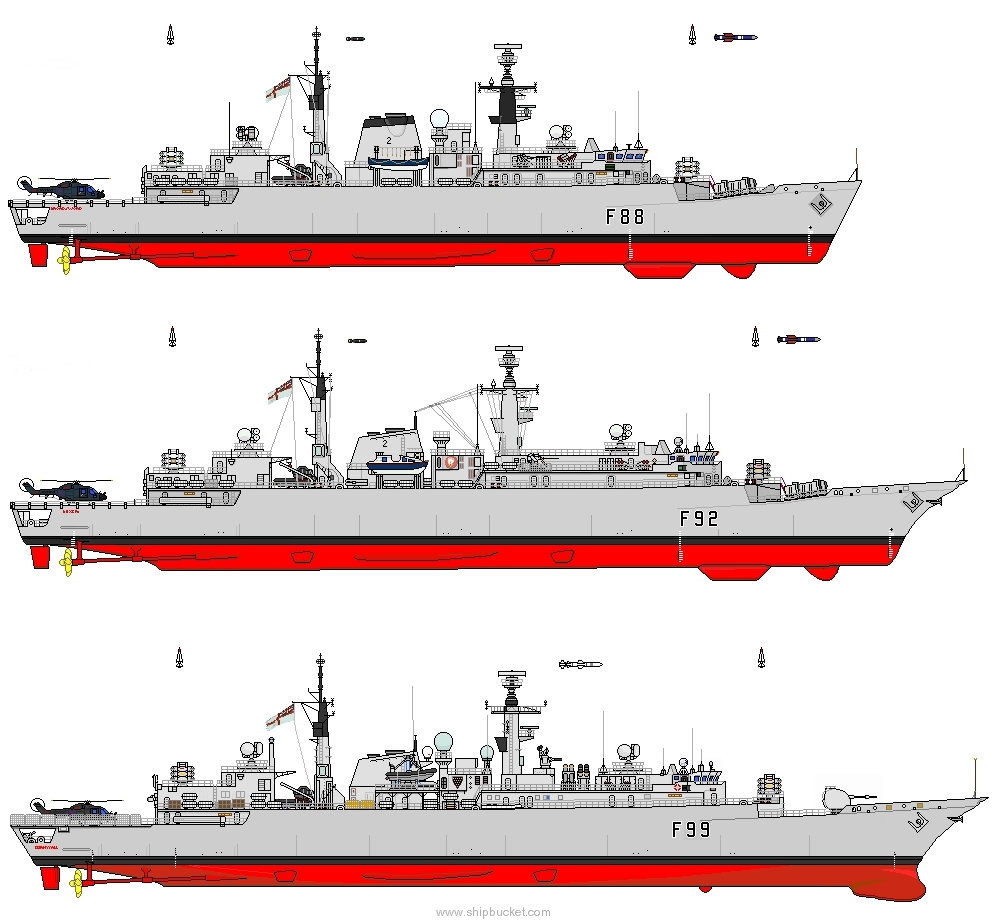 Type 22 - Broadsword class in comparison: Batch 1 with 2 x GWS-25 Seawolf missile launcher and 4 x MM.38 Exocet launcher (131m / 430ft hull) Batch 2 with 2 x GWS-25 Seawolf missile launcher and 4 x MM.38 Exocet launcher (146,5m / 481ft hull) Batch 3 with 2 x GWS-25 Seawolf missile launcher, 8 x Mk-141 Harpoon launcher and Mark 8 gun (148,1m / 486ft hull) 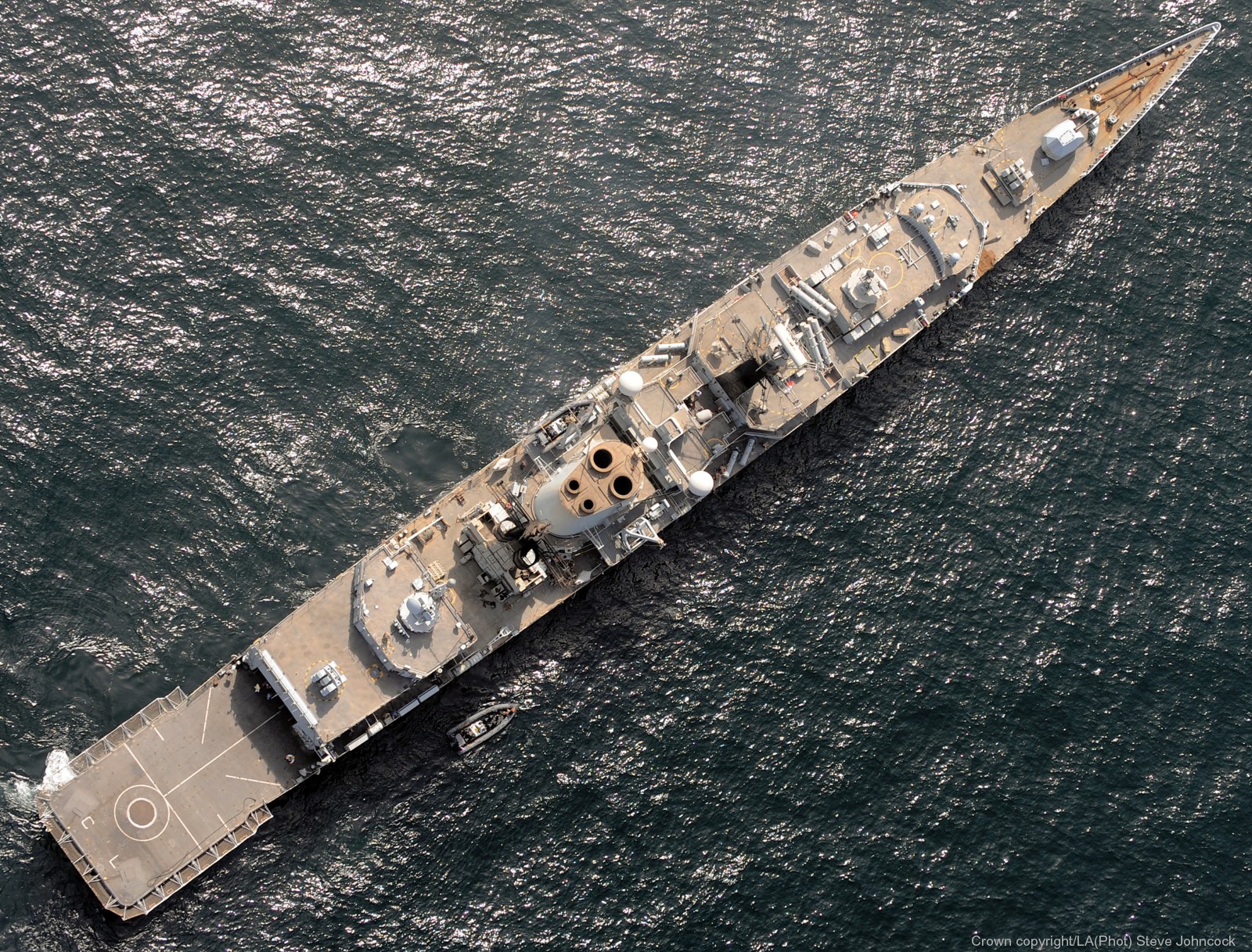 Batch 3 - overhead view 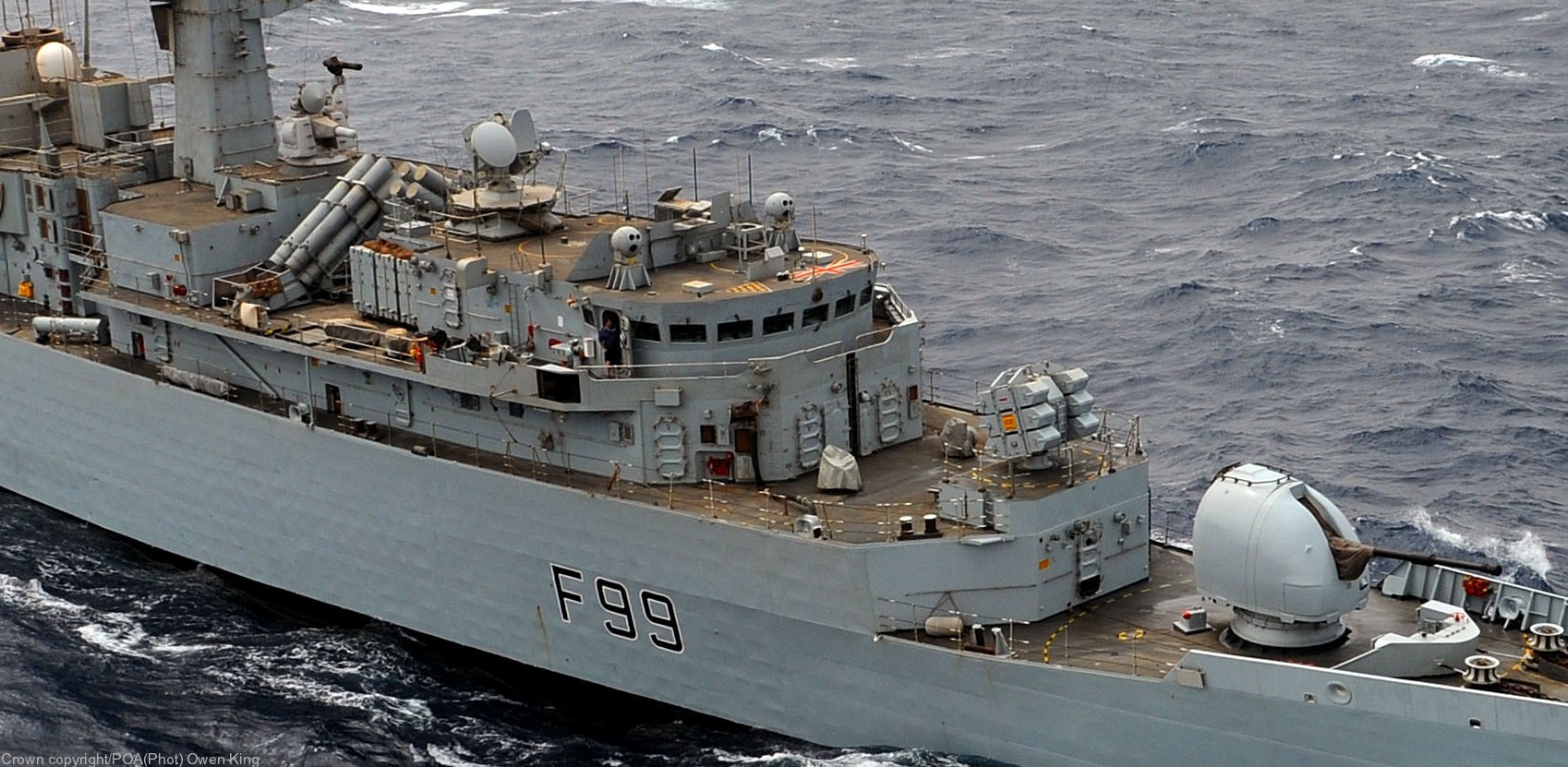 Batch 3 - Mark 8 gun, forward GWS-25 Sea Wolf SAM missile launcher, Mk-141 launcher for RGM-84 Harpoon SSM and Goalkeeper CIWS 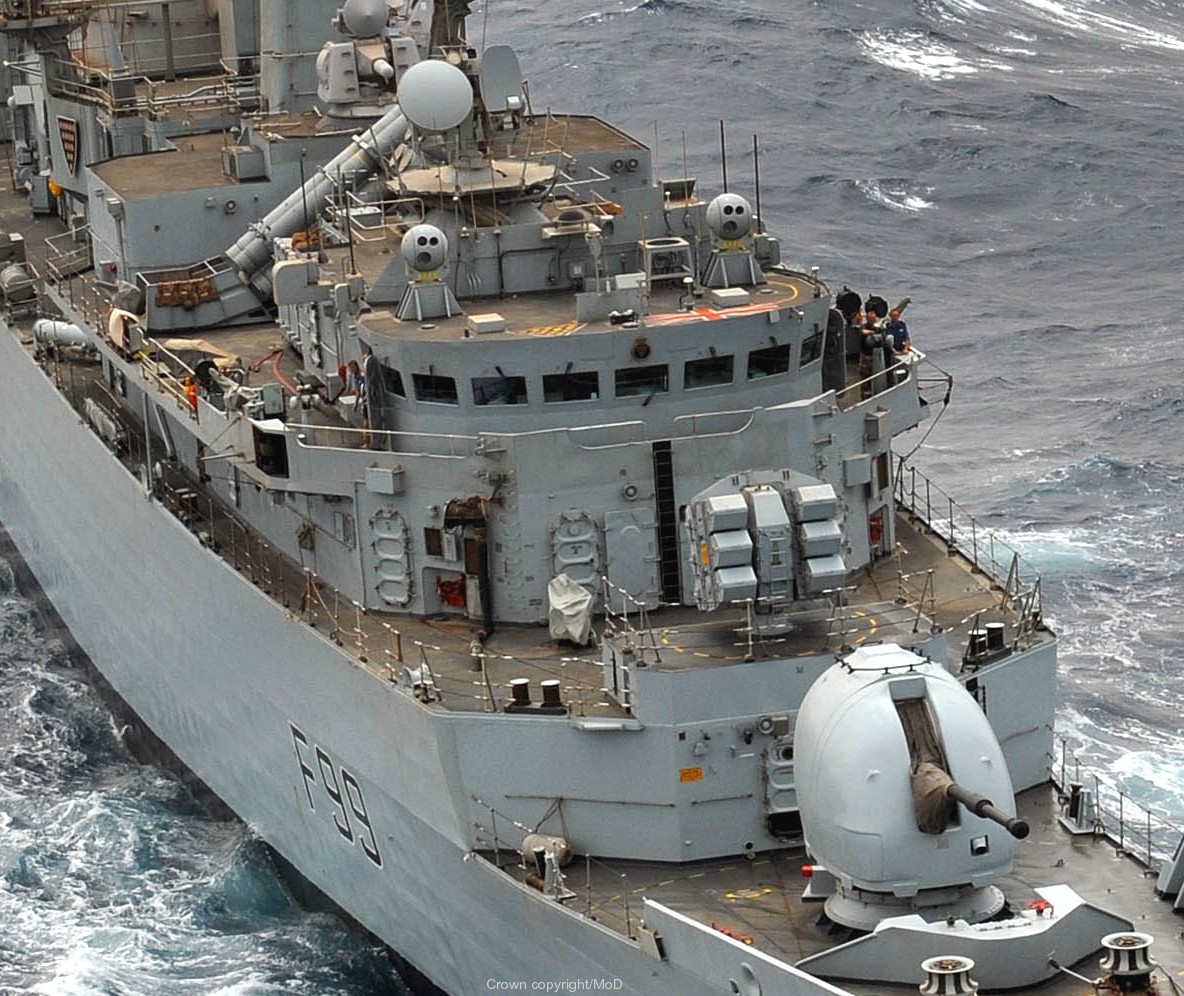 Batch 3 - Mark 8 gun, forward GWS-25 Sea Wolf SAM missile launcher and Mk-141 launcher for RGM-84 Harpoon SSM 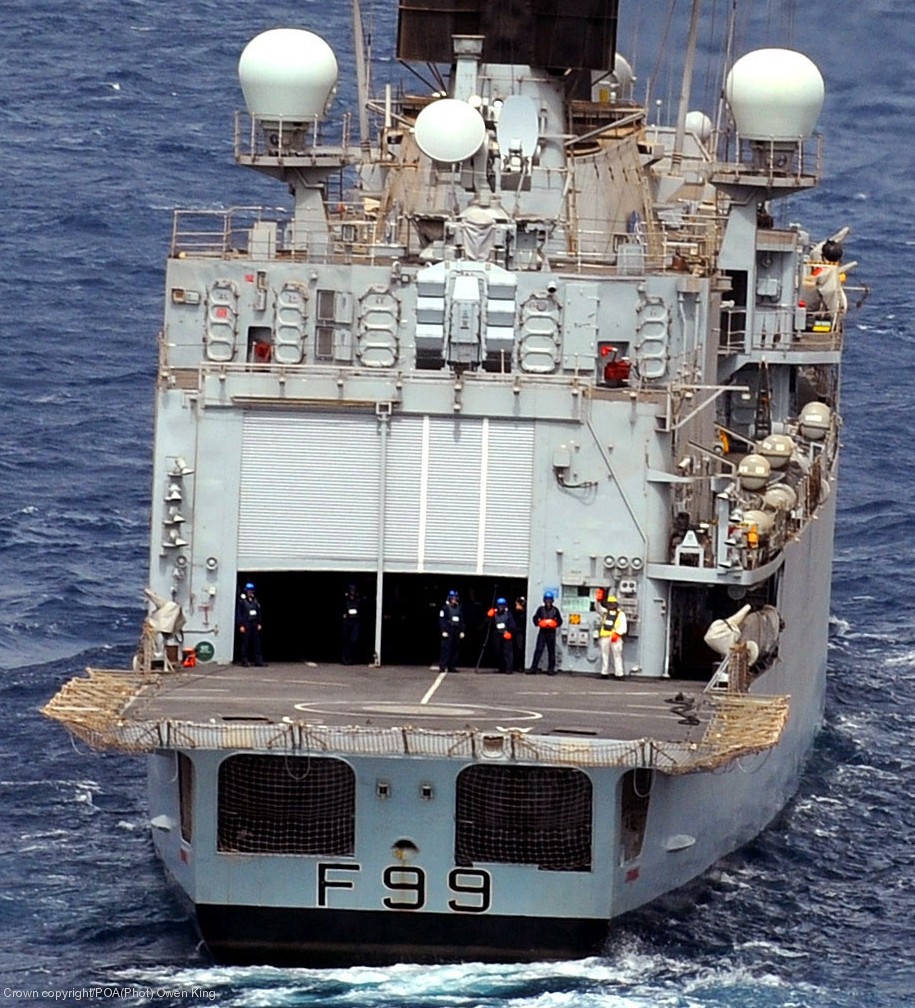 flight deck, hangar and aft GWS-25 Sea Wolf SAM missile launcher on the top of the hangar 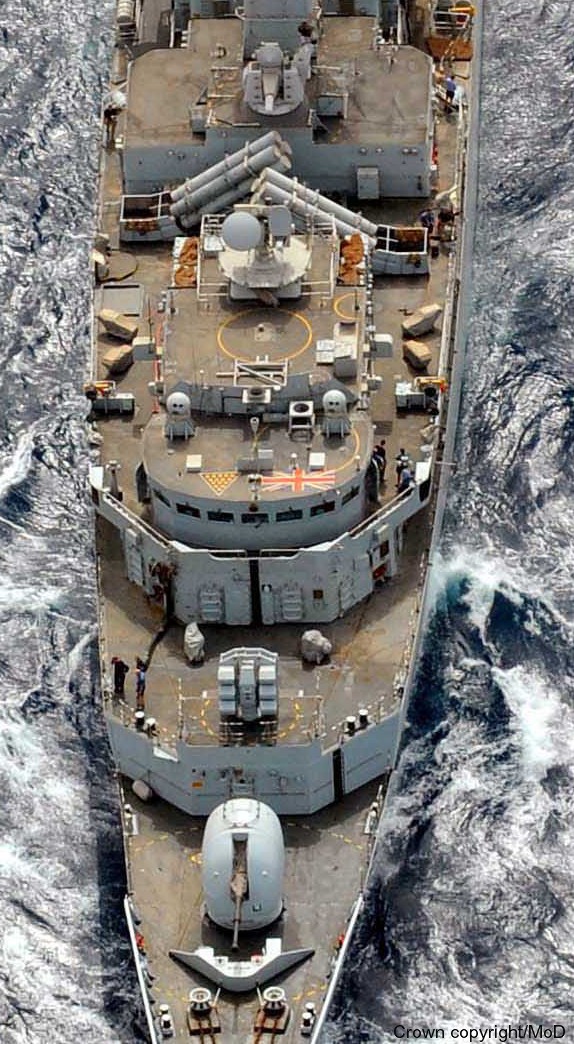 Batch 3 - Mark 8 gun, forward GWS-25 Sea Wolf SAM missile launcher, Mk-141 launcher for RGM-84 Harpoon SSM and Goalkeeper CIWS 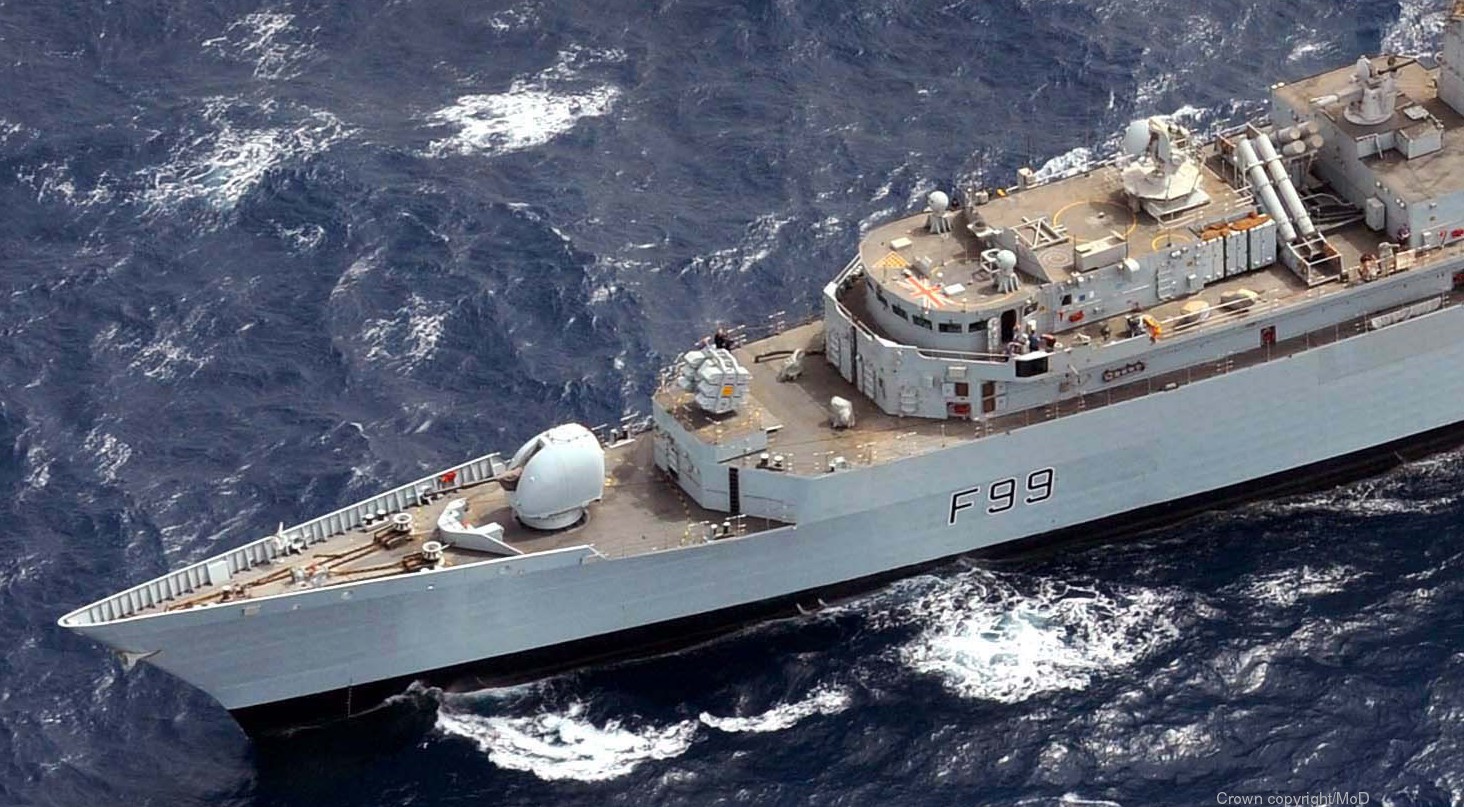    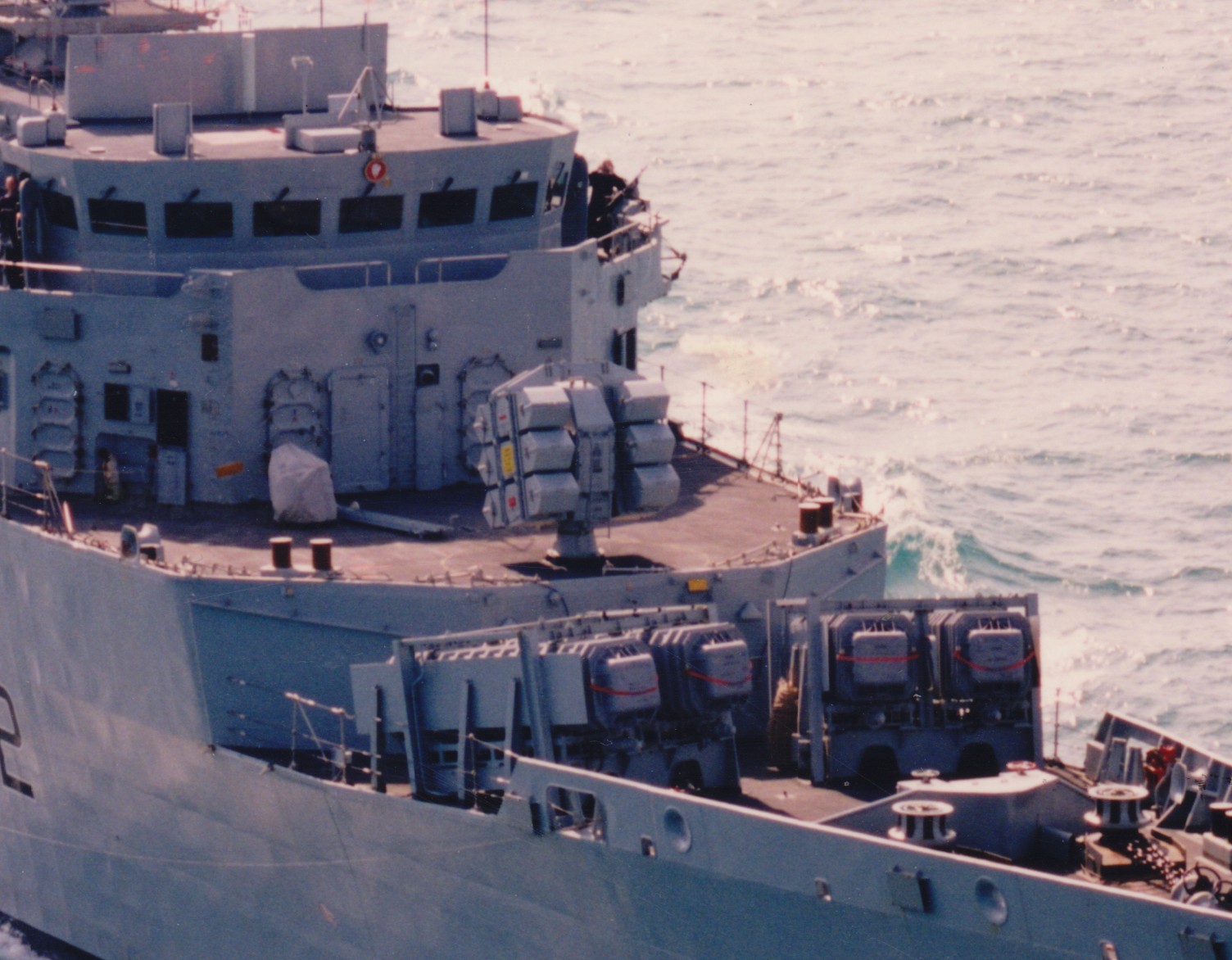 HMS Boxer (F 92) - Batch 2 / note the 4 MM.38 Exocet SSM missile launcher on the bow - no Mark 8 gun on Batch 1 & 2 ships 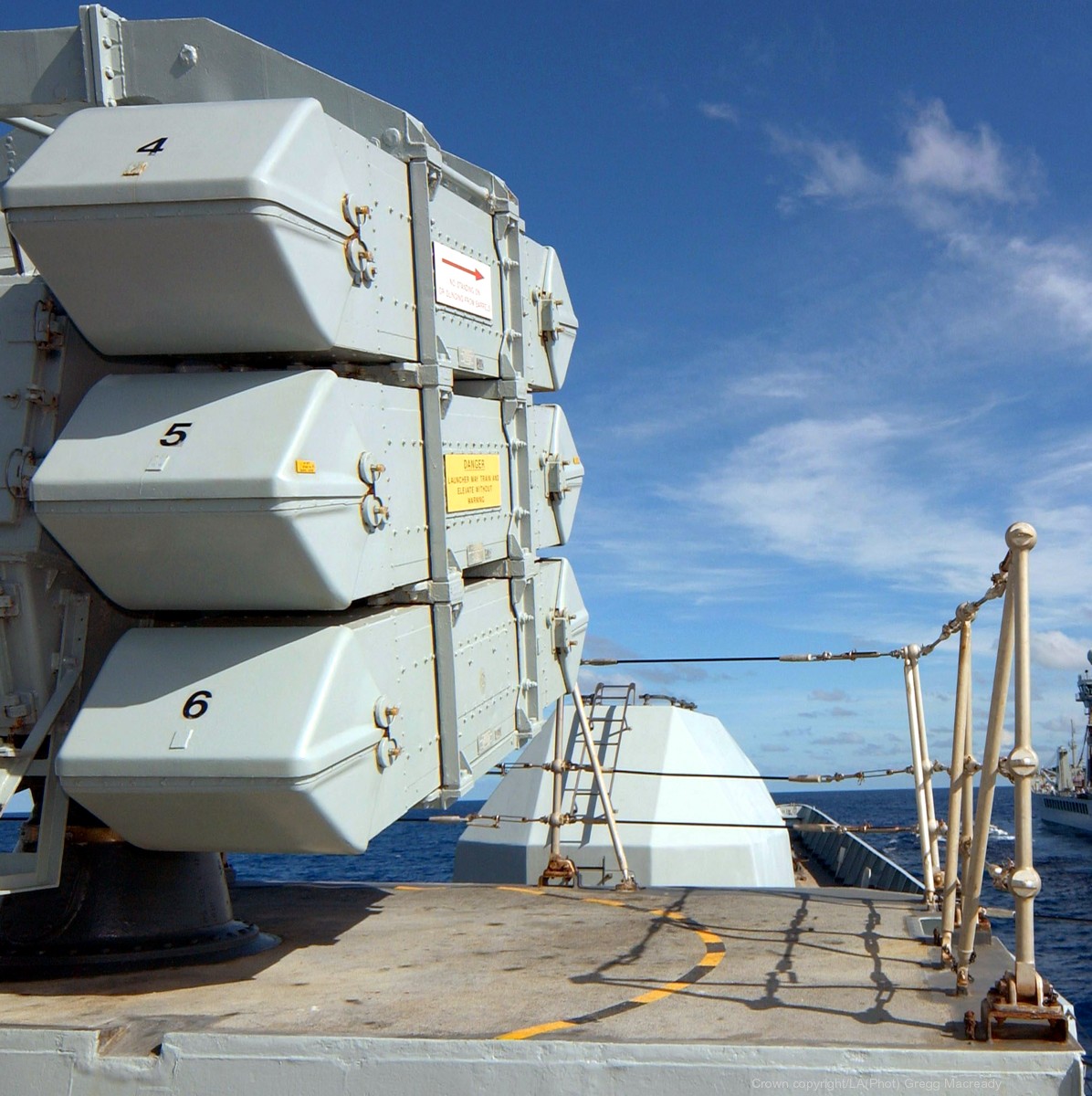 GWS-25 missile launcher for Sea Wolf SAM 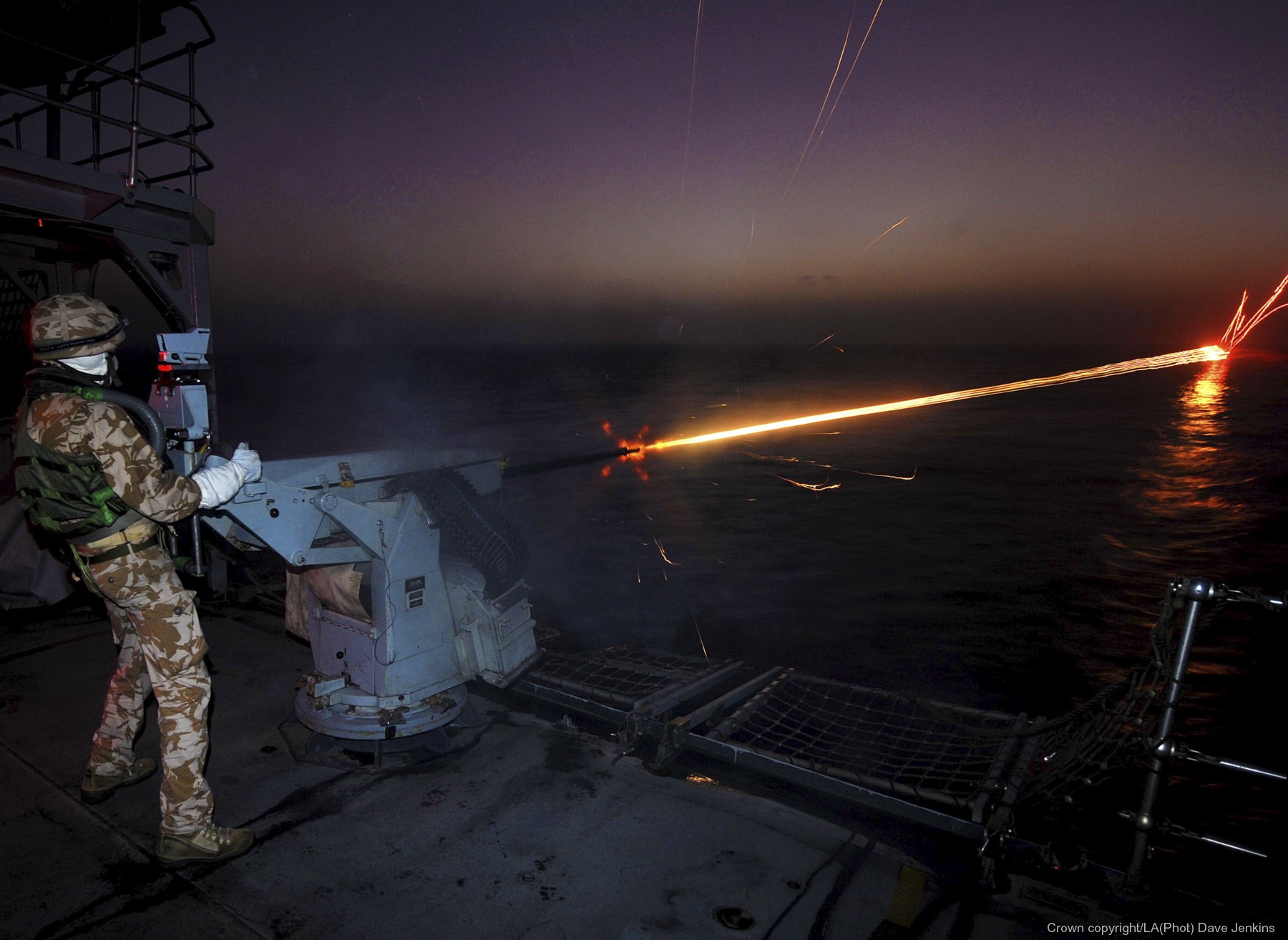 GAM-BO1 20mm machine gun system |
|
|
|
|
seaforces.org
|
Royal
Navy start page
| |